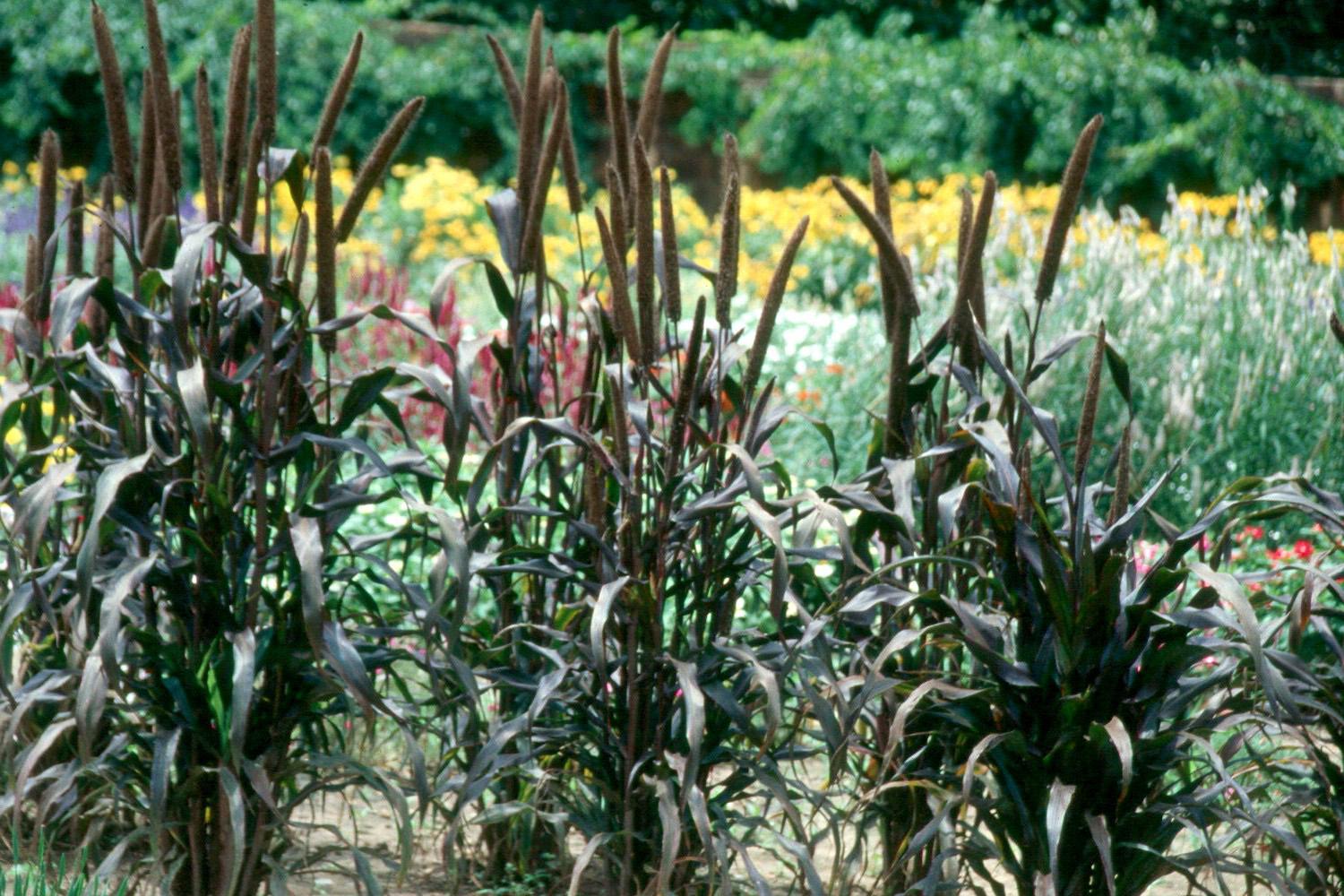Information Possibly Outdated
The information presented on this page was originally released on September 9, 2002. It may not be outdated, but please search our site for more current information. If you plan to quote or reference this information in a publication, please check with the Extension specialist or author before proceeding.
Purple Majesty receives All-American honors
By Norman Winter
MSU Horticulturist
Central Mississippi Research & Extension Center
The gardening world truly is coming of age when a millet or grain is named an All American Selections Gold Medal Winner. Even before the public learned that Purple Majesty was a winner, they were craving it and buying up the limited quantities.
Thousands of shoppers have seen it growing this year at Northpark Mall in Jackson and wondered what it was. In the Northpark garden, it was used with cannas and elephant ears for a really unique, if not exotic, look.
You may be thinking there is no way you will put a grain in your landscape. But before you jump to conclusions, consider the botanical name of Purple Majesty, Pennisetum glaucum. You see, it is closely related to fountain grass, Pennisetum alopecuriodes.
This species is native to the United States. As an annual, it thrives in our summer heat and produces dark purple leaves topped by equally dark fruited plumes. They will stand out in gardens wherever they are planted.
Select a site in full sun for the showiest color. The bed should be fertile, organic-rich and well-drained. Amend the soil if needed with 3 to 4 inches of organic matter and till to a depth of 8 to 10 inches. While preparing the soil, incorporate two pounds of a slow-release, 12-6-6-fertilizer per 100 square feet of bed space.
Plant at the same depth they are growing in the container with the crown slightly above the soil profile. Space plants 10 to 12 inches apart. Purple Majesty will get 4 to 5 feet tall, so place them accordingly in the flower border.
Since it is an annual and is easily grown from seed or transplants, it is possible to have succession plantings. Doing this will give you a couple of options. Remove the old plants and keep fresh ones going or plant together. This will give a layered look of differing heights.
One of the key considerations to get the maximum beauty of the plant is to transplant to the garden before Purple Majesty gets root-bound in the container. This will improve its branching and therefore the number of blooms. Apply a good layer of mulch after planting.
Give a light application of the fertilizer a month after transplanting and again six to eight weeks later. Keep the grass watered during the summer for the best appearance. Avoid letting it dry to the wilting point. The plumes that are a lot like cattails are great for using in the vase and drying, too.
Purple Majesty looks its best when grown informally in groups or clusters of five to nine plants. Spot planting one simply doesn't do the plant justice. Use them as a backdrop in the border and plant Hameln dwarf fountain grass in front. Try growing also with golden yellow flowers like the Indian Summer or Goldstrum rudbeckia for an exceptional display. Purple coneflowers, Russian sage and Autumn Joy sedum would make nice companion plants, too.
Purple Majesty will be a "must" plant for the new southern landscape. You can plant it in the spring, summer or fall.








